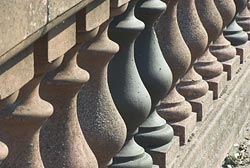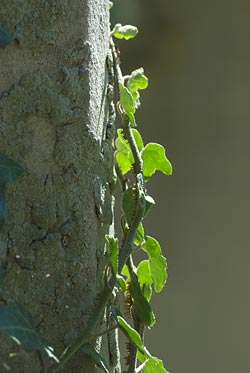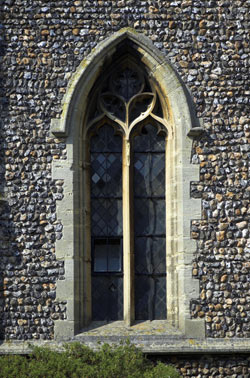Nikon AF-S VR Micro-Nikkor 105mm f/2.8G IF-ED
Nikon have raised a few eyebrows with the introduction of this lens as it is the first true Macro lens to carry stabilisation, Nikon’s VRII vibration reduction. Winner of the prestigious TIPA award for the best professional lens, we take a look at how it performs.
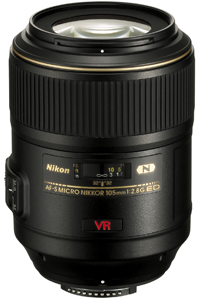 Specifications
Specifications
- Focal Length 105mm
- Max aperture f/2.8 (reads f/3)
- Min aperture f/32
- Min focus 0.31m (working distance 0.15m)
- Construction 14/12 elements/groups
- Filter size 62mm
- Hood HB-38 (Supplied)
- Dimensions 83x116mm
- Weight 0.72kg
- Price (SRP) £599
Build and handling
This lens comes supplied with a lens hood, body and lens caps and a soft, draw string pouch to keep it in. With a diameter of 83mm the lens is a touch fatter than you might expect with a lens of this nature but with a constant length of 116mm it is no longer than normal. The clean, simple barrel has just three accoutrements, a manual focus ring, a distance window marked in metres and feet with a reproduction ratio scale for good measure and a control panel sporting three two-position switches. These control, from top to bottom, the AF/MF, focus limiter and VR on/off. The build quality of all the elements is up to Nikon first class standards.
The idea of introducing Nikon’s newest version of VR to a Macro lens, especially at the focal length that is most popular with photographers is a good one, taken the number of extreme close-up shots that are ruined by camera shake. Does it work? Well, yes it does and I spent a day chasing butterflies and insects to check out their claims of up to 4 stops slower shutter speeds being needed between 3m and infinity. They do explain in their literature that, as magnification increases, so does the effect of camera shake, however, even at closer distances I found the VR system helped get more ‘keepers’. The AF-S autofocus system is a joy to use given that it is silent and very quick for a dedicated macro lens. The focus limiter, which only stops the focus going shorter than 0.5m, improves this speed even further in normal use. The system also allows manual over-ride without switching, another bonus.
The 62mm filter thread adorning the non-rotating front element is a popular size and the hood fits bayonet style with a positive click.
Optical quality
So, all in all a well thought out and put together lens, but how does it perform optically? The answer to that is, astonishingly well! There is no distortion that can be seen with the naked eye and the Imatest module could only measure 0.27% pincushion. Chromatic aberration is so well controlled that throughout the aperture range, which, incidentally, is a massive 8 stops, it never comes close to the threshold where it becomes visible, let alone a problem. The resolution, although slightly softer at the edges at wider apertures, never gets to the point where it would be visible on an A4 print and the average resolution at f/8 is one of the best I’ve ever seen.
With a construction of 14 elements in 12 groups including one ED element and one utilising Nikon’s nano-crystal coat to cut down internal reflections, the lens delivers good contrast and colour rendition across the frame. In fact, the only thing I could find that could be described as a negative is that, wide open, the lens only registers as f/3-3.1 and that is less than a third of a stop.
On the bonus side, internal focussing keeps the lens a constant length and Nikon are honest enough to provide a working distance as well as the more common closest focus distance. This lens gives a working distance of around six inches (150mm) depending on the camera body whereas, by tradition, the closest focus distance of 31cm, which is measured from the film/sensor plane is around twice that!
At 720gms weight, the lens is not so heavy that it becomes a pain when carried for long periods on the camera dangling from your neck, a practice that I am sure the vibration reduction will go a long way to encourage. It is certainly lighter to hump around than a heavy tripod and that is why Nikon have produced the lens.
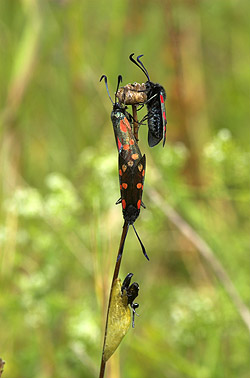
| 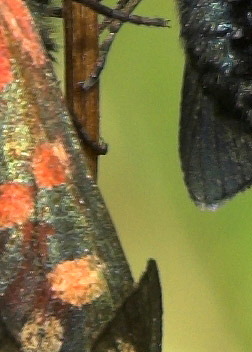 A 100% crop from the centre area of this hand held shot with VR engaged. f/11 at 1/60sec in a slight breeze. |
Right: Again hand held, this shot at f/11 and 1/180sec shows the contrast and clean backgrounds supplied by this lens. |
|
Click on each comparision photo below to view full size versions
Below is our lens test data. To find out how to use these graphs look at this article: How we test lenses
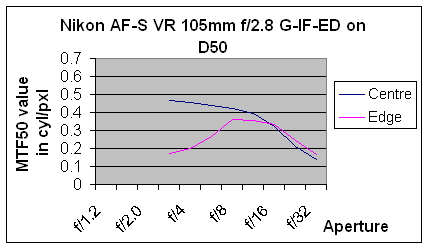
Verdict
There is not a lot I can criticise about this lens considering the optical performance along side the build quality and features. I think it will find a lot of friends amongst both professionals and keen amateurs alike. The only downside to the lens is the price, which is a bit steep for a type of lens that many will already have in their kit. Is it worth an upgrade? If you suffer from camera shake, yes!
In summary, the positive points of the Nikon AF-S VR 105mm f/2.8 IF-ED are:
![]() The only true macro with stabilisation. And it works
The only true macro with stabilisation. And it works
![]() Truly superb optical quality
Truly superb optical quality
![]() Rapid and silent autofocus
Rapid and silent autofocus
The negative points are:
![]() The price
The price
![]() Drop-off in resolution at the edges when wide open. (Minor)
Drop-off in resolution at the edges when wide open. (Minor)
Check the latest price for the Nikon AF-S VR 105mm f/2.8 IF-ED
Test by Ian Andrews www.wildaboutkent.com
Ian
The performance of the classic AF 105mm f/2 is known to be very fine, but I really have some reservations spending bucks on a long-to-be-overhauled AF screw.
At the same time, despite great paper spec. for AF-S VR lens, I'm not sure if it can really translate into real world performance rather than some marketing hype.
If anyone have tried both and provide some comments on both 105mm lens, that would be great!
With reference to Cayuga's post: while I obviously can't comment on the new AF-S VR lens, I can tell you that my older 105 f/2 AF lens is an absolute GEM, perhaps the best Nikon lens ever made for portraits. I also have a 85mm f/1.4, but I would not trade my 105 f/2 for anything else for portrait work. Auto-focusing is adequately-fast; every pic that I take with this lens makes me look like a better photographer than I really am.
Having said that, if you're into "snap-shooting," the new AF-S VR might have the advantage in terms of focusing speed and vibration-reduction. It is 6 oz. heavier, but it does retail for about $75 or so less.
My guess: Nikkor 105mm f/2 DC AF for pretty girl's faces; Micro-Nikkor 105mm AF-S VR for bugs, butterflies and ugly faces (just kidding). (BTW, I would not consider a 105mm lens to be the optimum "street-snap" lens).
I had some hesitation whether the price I paid was worthy (since the AF-S 105 f/2.8 VR is about the same price) because I was giving up VR and AF-S in the new 105 macro lens for just an extra stop in the old AF screw 105 DC.
After I've started to shoot the AF 105 f/2 DC wide open with my D200 however (to make a full-height subject stand out in a crowd on street snaps), there is really no other lens to substitute, except perhaps my AI-S 180 f/2.8 on film bodies.
The only disappointment I found is the slide-out shade which is really a cheap part compared to the solid AI-S 180 f/2.8.
Since Nikon is charging big bucks, I hope they can start to put an AF-S overhaul to their fixed focal lens lineup (
A lens of many applications.
Buy one!
I don't have the new 105VR but I have the non VR version 105mm F2.8AFD. It hunts quite a bit but when set on MF it cannot be beat for flower closeups or close headshots (very sharp).
Now, here is an idea; take the 105 F2DC and put a closeup two element 72mm diopter on it. Then, shoot some flowers at F2.
Leave the Micro Nikkors to those who make their living doing close-up work. Otherwise, use a closeup filter. I had the 105mm F2.8 MF AIS and the 55mm F2.8 MF AIS also and I sold them for lack of use. I speak from my experience. Decide if you really need a Micro.
In short, I like the newer Micro Nikkor, but I find the classic 105mm F2 DC to be more compatible with my needs.
Add your message
Please login here or if you've not registered, you can register here. Registering is safe, quick and free.
photodo Stats
428 MTF tests
74 in-depth photodo reviews
100+ users join each day
Help the lens community by reviewing or rating a lens today via our lens search
Latest Lens Reviews
- Chinon 28mm f/2.8 Vintage Lens Review
- Canon EF 70-200mm f/4L IS II USM Lens Review
- Samyang AF 85mm f/1.4 EF Review
- Sigma 70mm f/2.8 DG Macro Art Review
- Samyang AF 24mm f/2.8 FE Review
- Meike 50mm f/1.7 Review
- Tamron 70-210mm f/4 Di VC USD Review
- Lensbaby Burnside 35mm f/2.8 Review
- Asahi Super Takumar 50mm f/1.4 Review
- Asahi Super-Multi-Coated Takumar 135mm f/3.5 Review
